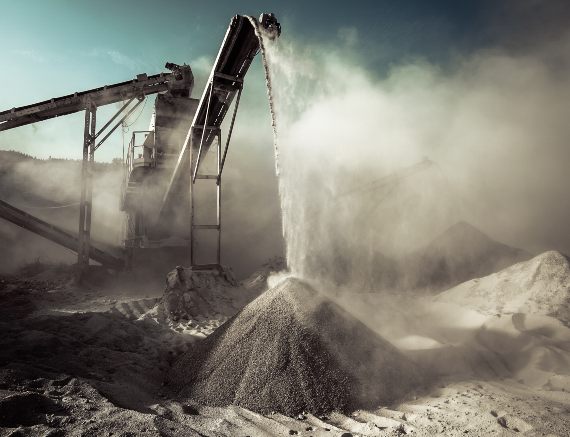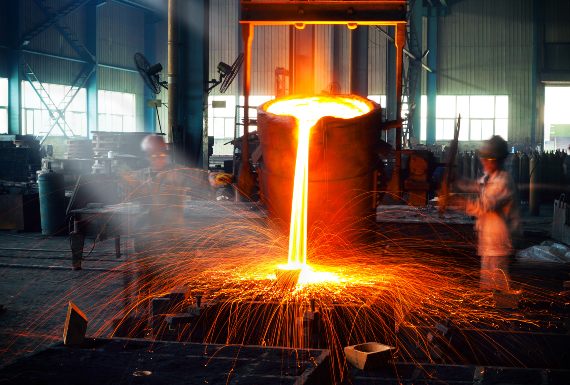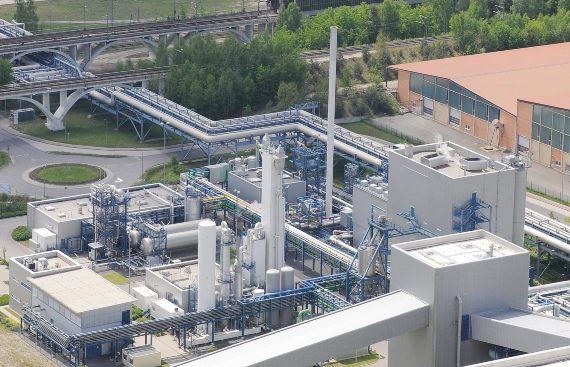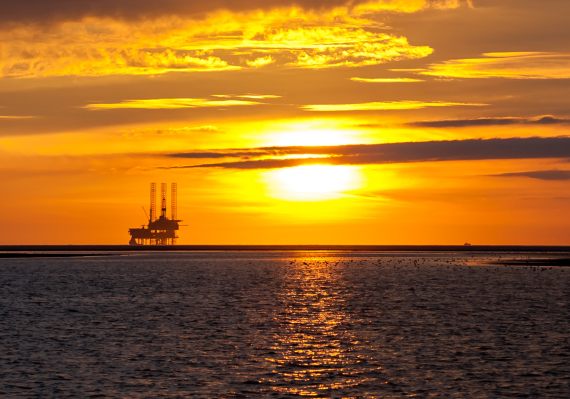Interview with Carlos Abanades, Research Professor at the CSIC, National Coal Institute.
What would happen on a planet where humans kept burning fossil fuels without taking any action to stop it?
According to the experts in charge of building climate scenarios, the IPCC and United Nations reports and publications in the most prestigious scientific journals, we can find a double message emerging in recent years. There is bad news and good news. The good news is that the world, thanks to the great technological revolutions that have taken place in the last five, ten or twenty years in renewable energies, is abandoning fossil fuels for certain massive applications. Electricity generation is a clear example. Electricity is already made with renewable sources and much more will be made in this way, even if there were no incentives and even if there were no climate change problem. Quite simply because today it is cheaper to generate this product from renewable sources than from fossil sources. And the bad news is that the world is unfortunately heading for a very serious problem with climate change. But the most catastrophic scenarios, those that led us to “if we keep going like this, we are going to end up with an increase of six or seven degrees in temperature and burning everything”, are no longer realistic. And that is something to celebrate because if you look at these works, the most negative and worst-case scenarios are now out of the question.
The bad news is that the most likely ones are still very problematic, i.e., those that lead to an average warming of two and a half or three degrees. When you ask the scientific community that assesses impacts and really understands the implications of this warming on ecosystems, or you ask economists, who calculate the consequences in coastal areas of sea level rise linked to these three degrees, they are still shocking you. In other words, it is not enough to reduce warming to that temperature. We have to decrease it to one and a half degrees as agreed in Paris. And that is still a gigantic challenge.
Until relatively recently, the talk was mostly about two degrees. But now, it seems that the goal is one and a half degrees. And urgently, right?
The two key words are “degree and a half” and “urgently”. We have to move at a speed in the progress that is already being made in reducing emissions. We have to accelerate that decarbonization so much to reach zero emissions by 2050. There are sectors of our business that are very, very large and that are tremendously difficult to decarbonize. Some are absolutely impossible, because even if you give them all the free, renewable, carbon-free electricity in the world, they will continue to emit CO2.

One example is the lime-making sector, which emits 400 million tons of CO2 per year. And lime is used for everything. It is needed to make steel, to make paints, to make glass, to treat acid gases in waste or wastewater treatment plants. In other words, it is an absolutely essential material for an infinite number of processes.
Another even larger sector is the cement industry. Cement emits 1.5 billion tons of CO2, which is equivalent to the entire global aviation sector, before COVID-19. Again, even if you give them all the electricity in the world for free and hydrogen for free, either you do something with that CO2 or it is absolutely unavoidable. Because living in a world without concrete doesn’t seem realistic before 2050. How do you build dams or buildings or highways? I mean, we are talking about massive quantities and massive industries. And we must never lose that perspective of scale.
Either you capture the CO2 from those systems and do something with it so that it doesn’t go into the atmosphere, or there is no solution, there is no other way. I mean zero is zero. If you want to reach zero, you have to do something with these unavoidable emissions, which are 10 or 15% right now, which may seem a low percentage now, but in 20 years’ time, if forecasts are met and we have reduced CO2 emissions by half, they may become 50% of total emissions. The importance of these unavoidable emissions is going to grow a lot with the need to decarbonize. And that is why those of us working in carbon capture, utilization and storage (CCUS) technologies are ready to offer this option as well, because otherwise there is no solution.
Of course, there is a part that cannot be reduced. They are going to emit CO2 no matter what. That is another problem that needs to be tackled.
Let’s look at another example, steel production, which is another emissions giant. Nearly 8% of all emissions worldwide come from this sector. Although you can make steel with electricity and renewable hydrogen, quality steel needs carbon. In other words, you have to put that carbon into pure iron. Even in the most renewable processes, which reduce CO2 emissions by 90%, that other 10% is again impossible to avoid because it is inherent in the production process.
Research is underway to eliminate that 10% of emissions, but the problem of time remains. It is unlikely that a technology that today is in the laboratory at the milligram scale will be able to reach the gigaton scale before 2050. And we need to solve this problem now. After all, everyone knows that, between 2020 and 2030, all the scenarios indicate that we are going to go a little bit with the same trend we are doing now.
This narrows the challenge even more to 2030 to 2050, where all the scenarios, which are really laws of physics on the conservation of matter, tell us irrefutably that if we go to 2030 maintaining stable emissions, in order to achieve a degree and a half of stability by the end of the century, we will have to introduce systems with negative emissions.

When we talk about negative emissions, we are not talking about something small, we are talking about something with an impact on the climate, on the atmosphere, of gigatons. What negative emissions technologies are available? Of course, planting trees. There are many options on the part of the biosphere. Although everybody understands that they are limited, because there is competition for land and all that. This is where CO2 capture technologies from the atmosphere or biogenic processes using biomass come in again. For example, in an urban waste treatment plant in the future, you will be able to capture CO2 and eliminate that emission.
There is a revival of interest in the fact that we have to decarbonize whether we like it or not, systems that are beyond repair and we even have to think about systems with negative emissions. And there are many people working on technologies to reuse CO2 by making synthetic fuels, although I am a bit skeptical because they need a lot of renewable energy to be worthwhile.
I mean, an airplane can’t cross the Atlantic or go all the way to Australia on batteries. The electric solution for that is not even around the corner. Aviation is going to have to burn fuels, which are the only fuels that have sufficient energy density to move airplanes. And then what do we do? Stop flying? It seems that we can, because we haven’t been doing it for a year. But it is either stop flying or accept it and introduce other types of solutions such as paying extra for the ticket so that the fuel comes from CO2 in the atmosphere or from a biomass plant. Because we will have already been able to capture it and transform it into a synthetic fuel with renewable energy.
Let’s now talk about capture technologies, which to many people sounds like science fiction. How is carbon captured?
CO2 capture is actually a trick word, because it’s not really captured until you’ve done something with it. Because if you capture it and re-emit it, we’re talking about something else. When we’re serious about capture, it has to be in the context of the climate debate. We’re talking about capturing it to get it in a pure form.
Capturing is actually a synonym for separating. And here comes the first good news: separating CO2 has been done for 100 years without any problem in refineries, in fertilizer plants… because separating gases is necessary for a large number of processes. In fact, there are commercial technologies that can be purchased “turnkey”, although for large tonnages they will cost a lot of money.
And therein lies the task of those of us who, like me, work in research: to create cheaper technologies that consume less energy. Because while it is true that CO2 capture is done in refineries and other industries, it has never been done in a cement plant, nor in a thermal power plant. And the technological challenge of doing it there is not so easy.
Adapting existing technologies to these new applications is not easy, although there is a lot of exciting research and thousands of people already working on this, including all those companies that already have commercial processes for certain systems adapting and researching to adapt their processes to cement plants, steel mills, waste plants, with all their pollutants and waste.
And in my research group we asked ourselves: Why don’t we forget about those more standard processes, and start using very high temperature lime and calcium oxide? And we discovered that it works very well in lime or cement making processes.

And all the projects we are working on are going that way: using calcium oxide as a reversible material by creating conditions in a system where I force the calcium oxide to absorb the CO2 and then when it has done that work, the gas is already CO2-free because it has entered the solid phase. And then I am going to force that CO2-loaded solid, which is calcium carbonate at very high temperature, to give me the CO2. And I am going to do that under conditions so that the CO2 that it delivers to me already comes in high purity.
And once we have the high purity CO2, what do we do with it?
Almost 20 years ago there was a report, published in 2005, that was started in 2002, the “IPCC Special Report for CO2 Capture and Storage”. For that report, I was involved in the boring capture chapter. But there were some amazing debates there, in the geological storage part or in the ocean CO2 storage part, because there were geophysical experts, oceanographers, people from Greenpeace, in the same room with experts from the big oil companies. This is the value of the IPCC, to put such diverse people in the same room and tell them that they have to come out with rules, discussing things they agree on, things they disagree on, and things they vehemently oppose. And of the things that all the experts, geologists, geophysicists, etc., agree on is that there are very deep and very sealed geological formations, from which nothing has escaped for millions of years and which are now loaded with pressurized fluids.
In other words, geological storage of CO2 is possible. The debate is how much it fits and where you can do it. And here we can distinguish between those who are more daring and those who are less daring, who say that there may be seismic movements or that there may be subduction. And, although these things are very improbable, they do not accept them and therefore do not want them.
But if you go for example to the North Sea, there are geological formations in the subsoil where you can fit all the CO2 of Europe in the next hundred years. And now the Norwegians are selling us methane or natural gas and underneath these formations, in even deeper places, they dream of putting these huge amounts of CO2. And they are going to do it.
The first major project in Europe, with a budget of 2.5 billion euros, was approved last year and is already starting to be implemented. But to do it on a large scale and to start thinking seriously about taking CO2 from northern Europe at first, it will probably have to be done by ship or pipeline and injected into the subsoil.
And if we trust the experts, the risks are minimal and manageable. Because if we put CO2 under a geological formation that has sustained natural gas at these pressures for hundreds of millions of years, it is difficult for it to escape. But if it does escape, the only thing we lose is the energy and money from the operation of storing it, since right now we are letting all the CO2 we emit escape. In short, storage is a very serious option and it is just around the corner in Europe, at least in the north.
If we think of niches, of companies that make lime or cement plants, there is no need for gigantic storage facilities, as is the case in the North Sea. Something much more local may be enough to solve the emissions problem. And there we will see what happens with geological storage.
When we talk about “hiding” all that CO2 we have collected, we are treating it as waste, but research is being done to find other uses for the CO2. Do you see that as feasible?
I am going to be very clear on the issue of CO2 reuse. First, we need to ask ourselves about the origin of the original carbon, where does that carbon come from? If the carbon comes from the subsoil, that is, from oil or limestone, where is that carbon going to go? In other words, if you have used it to make a synthetic fuel, when you put it in the plane, where does that carbon go? Into the atmosphere.
With plastic bags, recycling once reduces the production of plastic bags by 50%, but there is still going to be plastic bags. If you want to eliminate 100% of the plastic bags, recycling bags is not a solution.

Financial aid to help the reduction, that’s a given. If you make synthetic fuel with CO2 from a refinery, that synthetic fuel no longer needs oil from the refinery for the plane. But you can’t forget exactly where that C02 has come from.
I don’t see any problem with CO2 reuse when the carbon source is also renewable, not just energy. That is, if you have a paper mill or a power generation plant that uses biomass pellets or you are daring enough to capture CO2 from the air, with the cost implications that involves, then that is zero emissions. Here you really are reusing CO2 to make synthetic fuels.
How developed are CO2 capture technologies and what is the situation in Spain?
Sometimes CO2 capture technologies are accused of being too expensive. Allow me to calculate what it costs. If, for example, capturing a ton of CO2 costs between 50 and 100 euros, this translated into kilos (a scale that is much more intuitive), would come out at only five or ten cents per kilo. And now, how much CO2 does a kilo or a liter of gasoline generate? If you do the math, you realize that this CO2 cost, translated into extra gasoline prices, means a few tenths of a euro. So, is that expensive or cheap?
Commercial CO2 capture technologies are already highly competitive. If there is also an economic incentive, such as the emissions market in Europe, when this incentive rises to €50-60 per ton, these technologies will fully enter the market.
And where is Spain in this? Well, to get an idea, there are not many powerful capital goods companies in Spain, i.e. those that are going to get rich selling these technologies. Of those that already sell commercial equipment, there are none. They are in Norway, Japan, the USA and Germany.
Spain is a very industrialized country with many refineries, cement factories, etc. But there are few experts in generating and designing this type of equipment, although there are many companies that already use this equipment.
And competition in this area is fierce. The CO2 capture industry is going to be huge. In 20 or 30 years’ time, it is going to be like the big brother of the oil refining sector.
Comments on this publication